

The anonymous question: What is a supercar?
Supercars are expensive, fast and nobody knows exactly what a supercar is. End of the story. No, not quite. An attempt at classification with the Galaxus community.
It's user Anonymous - someone who doesn't want to see their name on Galaxus - who asked what a supercar actually is.
What actually defines a supercar?
Easy. Or not. But let's start at the bottom, because while mankind doesn't really agree on what constitutes a supercar, everyone agrees that a certain level of performance is part of it. This is not an exact ranking, but rather a rough overview of car classifications that are not necessarily linked to specific factors.
The car: Drives, works, unspectacular
At the bottom of the food chain of glitz and glamour is the normal car. These are the Kias, the Opels, the Ford Fiestas. Look at any Migros car park and you'll easily see a dozen of them.

Source: Giosue Ceniviva
They are either petrol-powered or, more recently, increasingly electric.
These are the cars that will have to be electric in the future. Because, like a Ford Transit, these vehicles are more of a tool than a lifestyle. These are the vehicles that are stuck in traffic jams on Zurich's Hardbrücke motorway on Wednesday mornings, chugging around with their engines running, with no rhyme or reason. Modern cars with their automatic standby mode do what they can, but nobody buys a new car just because it chugs slightly less.
But honestly? Electromobility is still a little too expensive to be really suitable for everyday use. The JAC e-S2 calls itself "probably the cheapest electric car in Switzerland", but is still priced higher than most combustion engines with comparable specifications.
Electric rant aside: Normal cars are just what you think they are. Normal cars.
The sports car: more hum, less space
From here on, things get a little vague, because nobody really agrees on the term "sports car". Except for the marketing departments of the car manufacturers. Generally speaking, a sports car is a car whose design prioritises driving pleasure over suitability for everyday use. But because we can't draw a clear line, sports cars are also suitable for everyday use. It is possible to go shopping in Migros in a Ferrari 488, just like in a JAC e-S2.
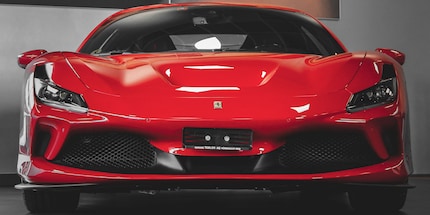
Source: Gianmarco Hodler
Sports cars are cars that look like they could take to the racetrack. Modified versions of the vehicle can even be found on the racetrack. This is where the location of the engine in the car becomes important for the first time. The position of the engine can have a massive impact on the handling of a vehicle, as the weight of the machine shifts completely.
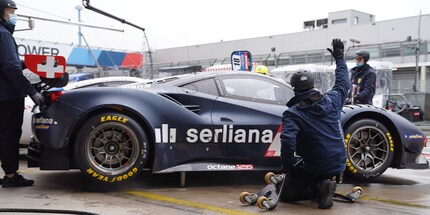
Source: Stephanie Tresch
The engine can either be installed at the front. Where you would expect to find an engine. Or at the rear, as in the Porsche 911. For engines that are not at the front, it gets exciting, because there are generally two categories:
- Mid-engine: The engine is installed behind the rear seat but in front of the rear axle. This reduces the moment of inertia - in simple terms: more pull - and distributes the weight quite favourably in the car.
- Rear engine: The engine is installed behind the rear axle. Also reduces the moment of inertia, but tends to oversteer. Is becoming increasingly rare in passenger cars, but is widespread in buses. Look where the engine is on your next journey in a Postbus.
But here, too, the boundaries are fluid. There are normal cars that are quite sleek and sports cars that border on the supercar. Then there are SUVs that are in no way inferior to a sports car.
The SUV: for housewives and men in their mid-40s
At some point in life, there comes a time when the normal car is not enough and the second car - a sports car, of course - is also too small to drive the boys to football training. That's when you need an SUV. SUV is an abbreviation and stands for Sports Utility Vehicle.

Source: Giosue Ceniviva
There are pretty SUVs like the Seat Tarraco, the BMW X3 and the Hyundai Tucson, which are strongly modelled on normal cars. Beautiful, curved shapes, luxury inside. Then there are the grandfathers of SUVs, the Jeeps, which are not just a brand but a type of vehicle. There is the Mitsubishi Pajero, the eponymous Jeep and - the best car ever - the Toyota Land Cruiser. From the 1970s, of course.

Source: pd
Somewhere between a normal car and an SUV is the category of crossover, which is neither fish nor fowl, but sells well. That makes the demarcation a little more complicated, but then again, fluid boundaries and all that.
The supercar: more horsepower, more price, less everyday life
Now we finally come to Anonymous' question of what a supercar is. Supercars are low. You sit almost on the ground. The engine is behind you. Every horsepower in your car is precisely engineered to be pounded into the tarmac. The Lamborghini Huracan, for example, sticks to the ground while driving.
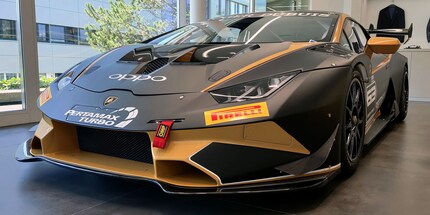
Source: Dominik Bärlocher
Suitability for everyday use has practically disappeared. A supercar, if it is authorised for the road, is something you take out on a Sunday and hope not to hit any humps that are too high. Shopping is unthinkable, because every cubic centimetre of the vehicle is used to get the last bit of power and performance out of the car. A Lamborghini naturally comes with a corresponding price tag, which apparently starts at 208,000 francs and is open at the top.
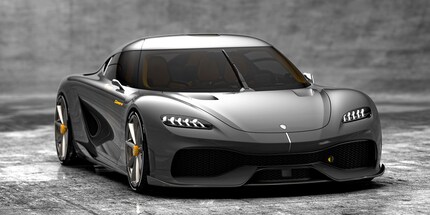
Source: koenigsegg.com
Supercars are all about speed. Where the 0-100 figure is used to express power in normal cars, it is a matter of pride in supercars. A Koenigsegg Gemera - a hybrid with a price tag of 1.9 million francs - manages to reach 100 from a standing start in 1.9 seconds. What else could happen with 1703 hp on 1850 kilograms of car?
In addition to the racing cars, there are also the super SUVs, where only the Lamborghini Urus really stands out. Or the Ford F-150 Shelby, perhaps still.
American muscle: performance, but cheap and beefy
If the Europeans are already making fat cars - Lamborghini comes from Italy, Koenigsegg from Sweden - then the Americans have to make even fatter cars. This usually takes the form of two things:
- As much horsepower as possible
- As wide as possible

Source: Giosue Ceniviva
An American muscle car is usually powered by a V8 engine with high fuel consumption. A Dodge Challenger Hellcat produces 717 hp with a fuel consumption of 6.2 litres, a Ford Mustang Shelby Supersnake even 825 hp with a fuel consumption of 5.0 litres, but with a cleverly installed turbocharger and even more clever tuning.
American muscle cars include the Ford Mustang, the Dodge Challenger, the Chevrolet Camaro and the Pontiac Firebird. They are not necessarily super low to the ground, but have enough comfort features in the regular version to keep up with a family car - Dodge even installs cup holders that cool or heat your drink - and rumble nice and loud.
But: where supercars slowly warm up at over 300 km/h, a 2016 Ford Mustang GT350 Shelby, for example, reaches 285.7 kilometres per hour in 5th gear. And 11,000 revs is not particularly good for a V8 engine either.
The hypercar: when super is not enough
Or you can go one category further: hypercars.
If you have to ask about the price of a hypercar, then you can't afford it anyway. The all-electric Pininfarina Battista will set you back around 2.2 million francs - a bargain, by the way - and you get technology that can just about pass for a car rather than a jet or spaceship. The chassis is made of carbon, with an aluminium structure designed to save lives in the event of an accident. Steering wheel? Carbon fibre. The four electric motors - one per wheel - deliver 1877 hp or 1400 kW of power with a torque of 2300 Newton metres.
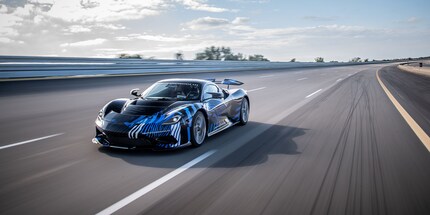
Source: pininfarina.com
The Battista accelerates from standstill to 100 km/h in under 2 seconds, to 300 km/h in 12 seconds and has a top speed of 350 kilometres per hour. Only 150 vehicles will be produced worldwide. By hand. In Italy. The car has to be completely dismantled and reassembled three times before the colour of the even more exclusive Anniversario edition is as you buy it. Why? Never mind, it's a hypercar. If you have to ask, then you just don't understand.
The world's super-rich like the Pininfarina Battista so much that the manufacturer distributes the cars evenly around the world. Before the car was officially unveiled, 60 of them had already been sold. A hypercar combines performance, luxury, exclusivity and one thing above all: reputation. Because if you get hold of one of the Battistas, you can show it off like no other at your super-rich friends' next party, even if the Kia drivers in the Migros car park don't even know what a Pininfarina is.
Journalist. Author. Hacker. A storyteller searching for boundaries, secrets and taboos – putting the world to paper. Not because I can but because I can’t not.
Interesting facts about products, behind-the-scenes looks at manufacturers and deep-dives on interesting people.
Show allThese articles might also interest you

Background information
Detroit Electric 1918: Tesla's great-grandfather, its owner and the search for a smile
by Dominik Bärlocher

Background information
Electric cars: Why Tesla will win the race
by Dominik Bärlocher
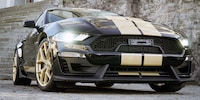
Background information
Ford Mustang GT-H: We have one. You want it, because it's about as special as it gets
by Dominik Bärlocher